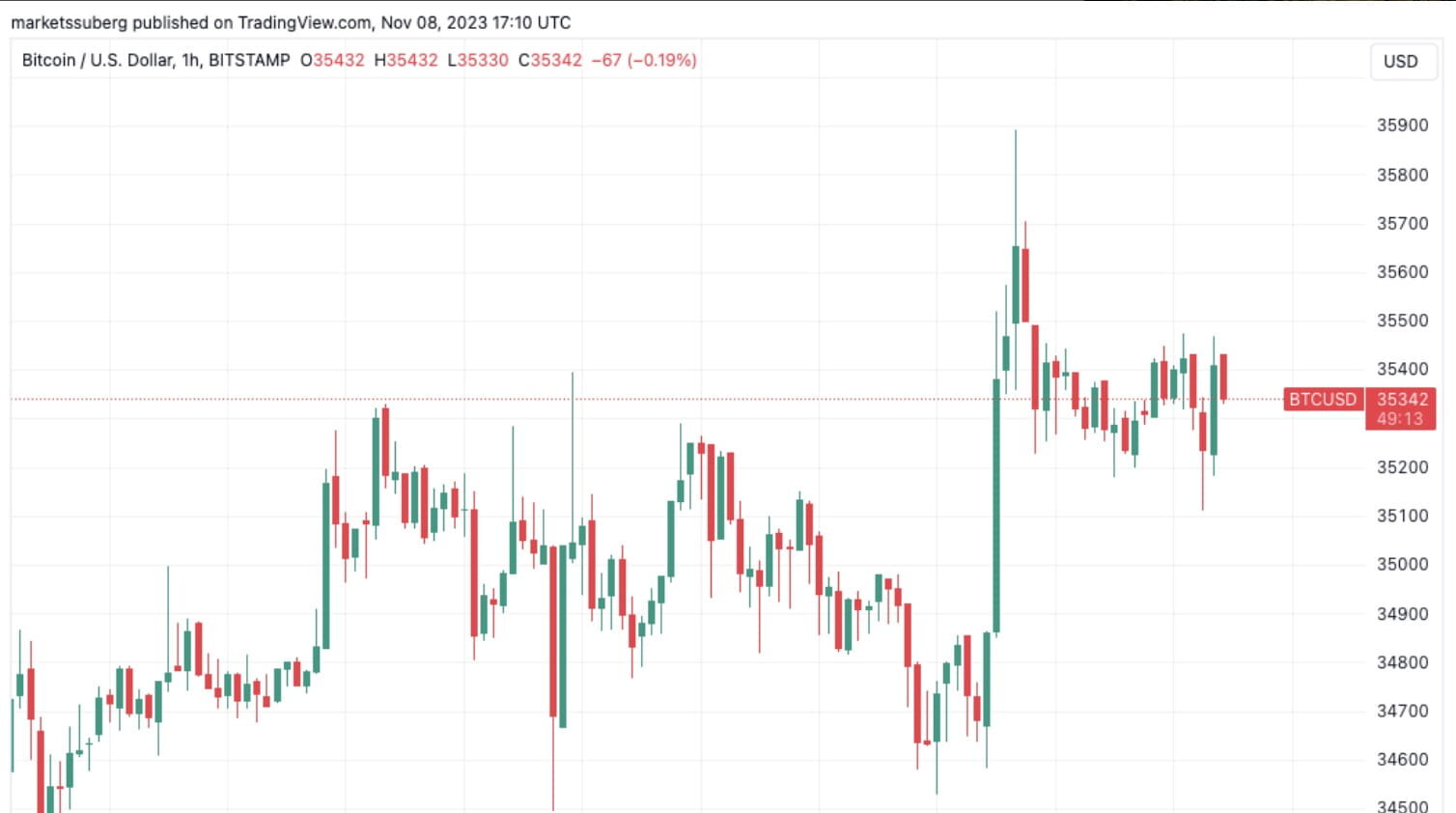Bitcoin Price Volatility and Market Insights

Bitcoin price volatility One of the most closely monitored assets in the financial scene as of March 18, 2025, is Bitcoin (BTC). Affected by a variety of worldwide elements, including legislative changes, macroeconomic conditions, and technical market indicators, the price of Bitcoin keeps changing.
The present situation of Bitcoin, its price fluctuations, the factors under action, and possible market trends will be investigated in this paper.
Bitcoin Price Volatility Insights
Trading around the $83,288 mark, Bitcoin has dropped 0.2% in the past 24 hours. The coin’s price range over the day ranges from $82,281 to $84,705, therefore underscoring its usual volatility. Although Bitcoin’s price stays above the $80,000 barrier, as the market reacts to internal and external economic events, there is increasing doubt about the cryptocurrency trends.

The general macroeconomic situation has lately influenced the price of Bitcoin, among other elements. Globally wary investors are turning to cryptocurrencies as a riskier asset type. The current declining trend in Bitcoin costs also reflects the general attitude of the market, where the appeal to risk-on assets has diminished.
U.S. Policy Impact
U.S. policy is among the most essential outside elements influencing Bitcoin nowadays. The U.S. government just revealed several economic initiatives, including creating the U.S. Crypto Strategic Reserve and tariffs on trading partners abroad. For Bitcoin, these developments have brought opportunities and hazards; many investors are closely monitoring the changes in the legislative environment.
The founding of the U.S. Crypto Strategic Reserve elicits conflicting opinions among the crypto community. On one hand, the reserve seeks to establish the United States as a worldwide leader in digital assets, especially Bitcoin. Conversely, there are rising questions regarding the long-term regulatory consequences of such programs. The market constantly changes; hence, the uncertainty about possible legislative changes influences investors’ views of Bitcoin’s future. While some view the reserve as evidence of Bitcoin’s validity, others worry that similar actions would lead to stricter rules meant to limit market expansion or hinder innovation.
Bitcoin’s $84,000 Resistance
Technically, Bitcoin has been running across opposition at the $84,000 mark. With several failed attempts to sustain momentum above this level, this price threshold has proved challenging for Bitcoin to rise regularly. Should Bitcoin fail to maintain above this resistance level, it could be subject to more selling pressure, hence maybe lowering prices. On the other hand, a breakout above $84,000 would indicate a return to a positive trend since Bitcoin might soon reach the $90,000 barrier.
Furthermore, new on-chain data shows that Bitcoin miners are stepping up their operations by loading significant coin volumes into exchanges. This behavior implies that miners could be getting ready to sell their shares, may be out of worries about the market’s direction. Often a leading predictor of market mood, mineral conduct could indicate that miners expect reduced prices going forward.
Miners’ Impact on Prices
Although they are vital network members, Bitcoin miners’ actions can also significantly determine price swings. Large-scale Bitcoin sales by miners can cause the market to weaken remarkably if their selling matches times of reduced demand. An overabundance of Bitcoin pushed to markets for sale could lead to a decline in pricing as more of the coin becomes available.
Furthermore, the activity of Bitcoin’s miners is tightly linked to its price performance. High prices cause miners to hang onto their coins, hoping that prices will keep rising. Miners may decide to sell their assets, though, to lock in gains or pay running expenses if prices fall. This phenomenon can cause price swings that reflect miners’ opinions on the larger market.
Bitcoin Price Influences
Looking ahead, a number of elements will influence Bitcoin’s price path. First, changes in policy will still influence market confidence in Bitcoin, especially with regard to the U.S. Crypto Strategic Reserve and worldwide rules. Any government action aimed at increasing control or restriction of Bitcoin use might cause prices to drop; news of regulatory clarity or endorsement could generate a positive attitude.
Understanding Bitcoin’s price swings will also depend heavily on technical study. As was noted, Bitcoin is running against opposition close to $84,000; traders will be keenly monitoring this level. A break over this resistance would indicate a fresh rising trend; failing to top this level could cause more downward pressure.
Final thoughts
Ultimately, the price analysis of Bitcoin for today shows a market in flux molded by several outside elements, including macroeconomic events, U.S. legislative actions, and worldwide policy changes. According to technical forecasts, resistance around $84,000 exists, and Bitcoin’s future price movements will depend on whether it can surpass this level or cause more drops. As always, the bitcoin market is quite erratic; therefore, investors should keep up-to-date and consider technical and fundamental considerations when deciding what to invest in.
Note: The cryptocurrency market is quite erratic and influenced by several erratic elements. This study serves solely informational needs; it does not provide financial guidance. Before deciding on any investment, always extensively research and speak with a qualified financial counselor.





